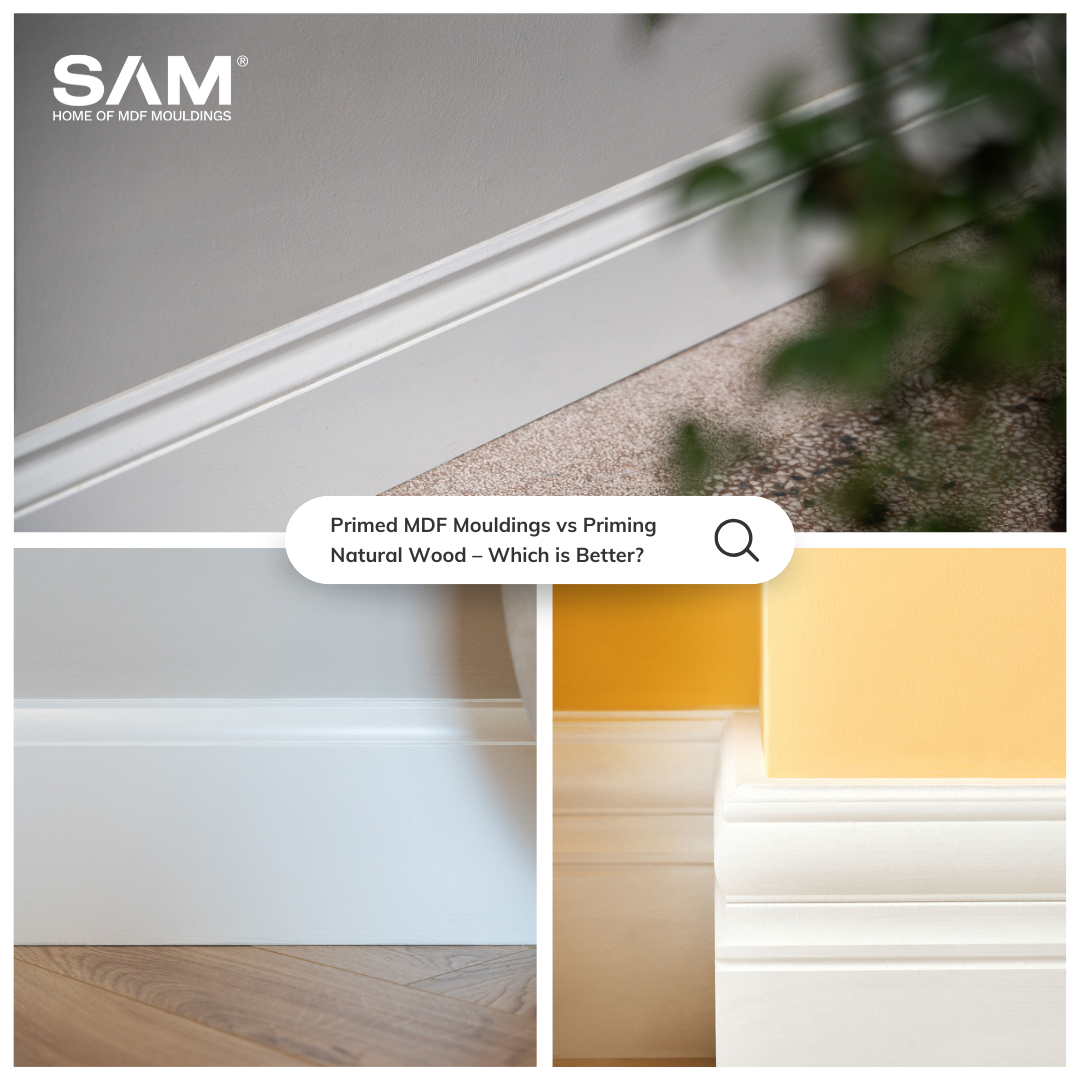Mouldings are an essential element of interior design, creating an aesthetically pleasing transition between different parts of a wall and imbuing a space with character. When it comes to choosing the right products for a project, two popular options are primed MDF mouldings and primed natural wood mouldings.
But which is the right option? In this post, we’ll look at the differences between each product type so you can make an informed decision.
Choosing Materials: MDF Mouldings or Timber?
First, let’s look at the differences between MDF mouldings and natural timber.
Mark Kirkpatrick, technical director at SAM, explains that MDF, also known as medium-density fibreboard, is an engineered product made of wood fibres that are compressed with a resin binder and wax. “The result is a consistent material with a smooth surface that’s ideal for finishing,” he says.
“Here at SAM, our MDF mouldings are made using moisture-resistant MDF, meaning they are resistant to warping and swelling in rooms where moisture and humidity are of concern, such as kitchens or bathrooms,” he adds.
Natural timber mouldings are more commonly made of softwood materials such as pine, although hardwood mouldings are also widely available. “Because timber mouldings are made of a natural material, they can have inconsistencies such as defects and knots, which must be cut out prior to finishing and installation,” Mark says. This can lead to excess on-site waste, increased labour time and difficulties ordering correct quantities for a project.
Other benefits of MDF mouldings include their durability, flexibility, price and ease of maintenance. They’re also supplied in consistent lengths, and extra-wide widths can be accommodated.
Which Finish: Primed MDF Mouldings or Unprimed?
Next, there’s the question of primed or unprimed products. The differences here speak for themselves, primed MDF mouldings are already primed. That means they arrive ready for installation and finishing. Meanwhile, unprimed timber must be cut, sanded, coated with primer, allowed to dry, then coated with a second layer of primer, and then the top-coat of paint applied, installation and finishing.
Mark notes that, although primed mouldings may cost a little more up-front than their unprimed counterparts, the time and on-site labour costs saved quickly make up for any price differences. “Because primed MDF mouldings are coated under factory conditions, they offer excellent consistency and quality that on-site priming just can’t match,” he adds.
If the benefits of primed MDF mouldings sound appealing, there’s also the option of
fully finished MDF mouldings, which come ready for installation, further reducing on-site costs and labour. Choose from SAM Zero, which has two coats of primer and an acrylic topcoat, or SAM Wrap, which can be covered in a choice of paper, PVC or real wood veneer.
Specify Primed MDF Mouldings from SAM
While the choice between primed MDF mouldings and unprimed natural timber mouldings ultimately comes down to project requirements, budget and design preferences, it’s also safe to say that primed MDF mouldings offer a variety of benefits that can lead to better finished results for specifiers, contractors and end-users.
Here at SAM, we offer a wide range of high-quality primed MDF mouldings, and our expert team can help you find the right product. Get in touch for expert advice or to discuss project requirements in more detail. You can also download our catalogue or request a sample to evaluate the quality of our MDF products for yourself.
For more than 35 years, SAM has been a trusted manufacturer of MDF mouldings for the construction and home improvement industries. With more than 250 different products to choose from, we offer styles and finishing options to suit any design aesthetic, and our large stock capacity ensures reliable availability.


